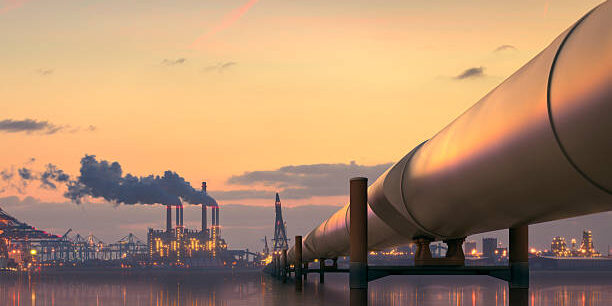One of the world’s most mature deepwater basins, the U.S. Gulf of Mexico, has a lot of production life left and could help bridge the oil supply gap that is widening with the maturing of many currently producing assets globally. The basin now pumping 15% of U.S. crude has the potential to deliver another up to 2 million barrels per day (bpd) of the new supply sources needed by 2040, McKinsey & Company said in a new report this month. The Gulf can also do it with one of the lowest emissions per barrel of all major basins in the world. The deepwater U.S. Gulf of Mexico has one of the lowest emissions-per-barrel estimates in the world, right behind Saudi Arabia and the United Arab Emirates (UAE) and the North Sea deepwater basin, including offshore Norway and the UK, according to McKinsey estimates based on its calculations and data from the International Energy Agency (IEA) and Stanford University.
Operators in the Gulf of Mexico—most of them supermajors with net-zero 2050 ambitions and targets—are also motivated to continue pumping oil and gas in the area, which has less than half of the emissions per barrel compared with other major basins such as U.S. shale, shallow water developments globally, other OPEC+ producers outside Saudi Arabia and the UAE, or oil sands, according to McKinsey.
“That potential matters to the many oil and gas companies that are investing in the Gulf of Mexico, especially to those that have announced net-zero emissions targets. And it matters for the world climate,” McKinsey’s consultants said in their report.
The Gulf of Mexico’s relatively low emissions profile is the result of four factors, the consultancy says. These are minimal gas flaring because most of the natural gas is sold on the local markets, efficient facilities minimizing methane leaks, high throughput at wells and production facilities, and finally, operators making decarbonization efforts to stay in line with environmental sustainability goals and in compliance with regulations.
Related: China’s Oil Demand Is Finally Bouncing Back
According to the Current Trajectory scenario of McKinsey Energy Insights’ Global Energy Perspective 2022, deepwater basins are expected to provide 7 million bpd out of 24 million bpd of new supply sources needed by 2040. The Gulf of Mexico could supply 1-2 million bpd of this, with important implications for the U.S. economy and global emissions.
The other supply is expected to come from areas such as the Middle East, offshore Brazil, and offshore West Africa. However, the future contribution of each of those regions “is largely uncertain” due to OPEC’s production policies and decisions and the asset performance of new investments, among other factors, McKinsey said.
Regardless of where new oil supply will come from, one thing is certain—“additional sources of supply will be needed to meet demand and offset the natural decline of current online production,” the consultancy noted.
That’s a warning recently repeated from the biggest crude oil exporter in the world, Saudi Arabia.
Just last week, Saudi Aramco’s CEO Amin Nasser said—once again—that the world would need oil and gas for the foreseeable future and would need more investment in the industry just to keep supply steady amid declining output from maturing wells, and even more investment to boost production capacity to meet the world’s energy needs.
If it’s not the U.S. Gulf of Mexico, there will be other basins to fill the supply gap—but they could be much more emission-intensive.
“In the extreme case, an absence of continued resource access and development in the Gulf of Mexico would result in less of the lower-carbon production needed during the energy transition,” McKinsey said.
Without continued investment, the Gulf of Mexico could see production starting to decline as early as 2024, and fall by 800,000 bpd by 2040, from around 1.7 million bpd now, McKinsey’s analysts have estimated.
The supermajors are investing in the Gulf of Mexico. For example, BP says its net production was around 290,000 boe/d last year, and it expects to produce 400,000 boe/d in the Gulf of Mexico by the mid-2020s.
Chevron financially approved this year and is preparing to develop the Ballymore project, its first Norphlet reservoir development in the area. Ballymore could yield 75,000 bpd of crude, with first oil expected in 2025.
“The Gulf of Mexico has some of the lowest carbon intensity production within Chevron’s portfolio. It averages an intensity of 6 kg carbon equivalent per barrel of oil equivalent, a fraction of the global average,” the U.S. supermajor says.
![]()




